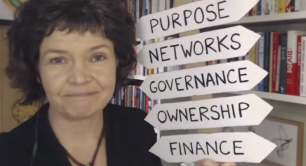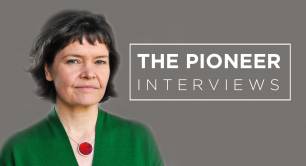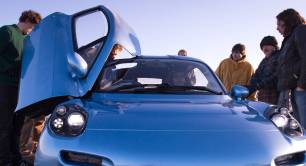Prototyping the future: how next-generation enterprises are unlocking solutions to the polycrisis
‘Deep enterprise redesign’ – transforming the underlying structures of who holds power and toward what end in business – is the new frontier of sustainability, and the beginning of the end of shareholder primacy, say Marjorie Kelly, Kate Raworth and Erinch Sahan.
Collaborating as co-authors for the first time in this article, Kelly – whose book Owning Our Future first outlined the five elements of deep enterprise design – and Doughnut Economics Action Lab's Raworth and Sahan (pictured below, left to right) warn that the future would not look back kindly on a business community that continued to prioritise capital accumulation for an elite few in the context of fast-growing social crises and ecological breakdown.
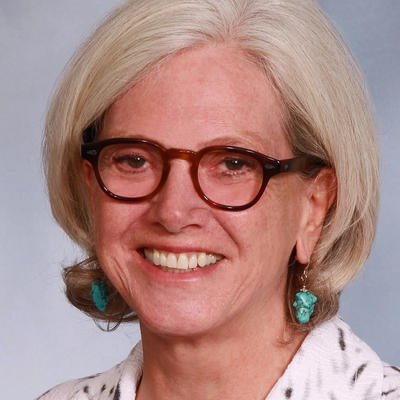
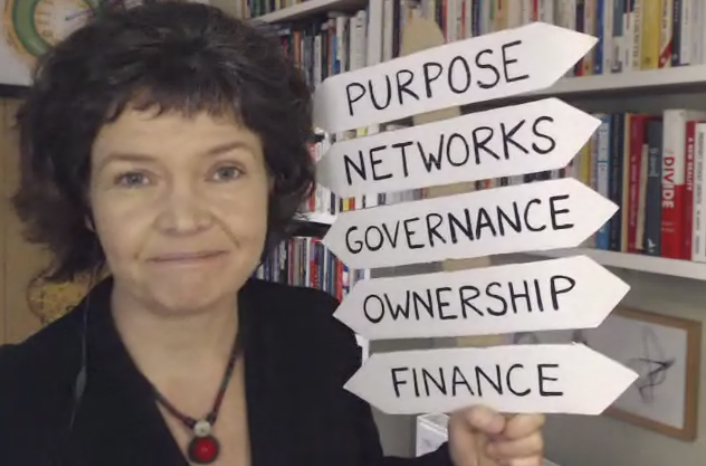
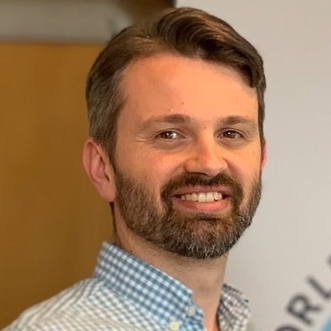
Our world is hurtling toward an uncertain future. Authoritarianism is on the rise, inequality has sowed deep divisions economically and politically, and climate catastrophe is upon us in the form of increased wildfires, floods, and heat waves. In the United States, the annual Memorial Day holiday – the unofficial beginning of summer – was marred by severe weather across the South, Midwest, and East Coast that resulted in 23 deaths and hundreds of thousands of people without power. This is the new “normal”.
Meanwhile, in April, the US Senate Committee on the Budget and House Democrats on the Oversight Committee released Denial, Disinformation and Doublespeak: Big Oil’s Evolving Efforts to Avoid Accountability for Climate Change, which gives an account of the failure of big business not only to address the climate catastrophe but to take any responsibility at all. Just as the Memorial Day tragedies were but a blip in the media news cycle, this report got very little attention across the media.
Despite increasingly regular signs that the 21st century will be one of ongoing planetary-scale crisis, the world of business – incongruously, blindly – continues following a paradigm of governance little changed since the 19th century: profit and share-price maximisation for shareholders remains (on steroids) as the dominant norm, despite the consequences. Since the vast majority of stock-market value is held by the wealthiest, this norm might be phrased differently: corporations are in the business of creating more wealth for the wealthy, no matter the impact on workers, society, and the planet.
Corporations are in the business of creating more wealth for the wealthy, no matter the impact on workers, society, and the planet
This archaic paradigm holds companies in its iron grip, despite widespread sentiment among CEOs that the climate crisis will force businesses to reinvent themselves in the next decade. Corporate talk of sustainability is at fever pitch, with business leaders publicly proclaiming their commitment to the environment, to a purpose beyond profit, or to serving multiple stakeholders (not only shareholders). But few recognise how deep the transformation must go. Thankfully, cutting-edge companies are modeling the needed new paradigm, where serving life – not enriching an elite – is at the centre. Making this paradigm shift real means reaching into what we call “deep enterprise redesign” – transforming the underlying structures of who holds power and toward what end.
There are many living examples. One is Patagonia, whose founder Yvon Chouinard donated $3bn in shares to trust and nonprofit ownership, turning his company into a dedicated engine for sustainability, where, as the company puts it, “Earth is now our only shareholder.”
Another visionary leader is Eileen Fisher, whose firm of the same name uses its public benefit corporation and employee-ownership design to support its commitment to greening its supply chain and influencing its industry to do the same.
British soap maker Faith in Nature gave nature a seat on its board.
Dutch chocolate brand Tony’s Chocolonely created shares with special rights to protect the company’s purpose of making the chocolate industry slave-free.
German importer El Puente and Welsh carmaker Riversimple put representatives of impacted stakeholders on their boards.
Einhorn, Ecosia, Selco and Cafédirect have adopted ownership models giving controlling shares to foundations, nonprofits, and communities to lock-in social purpose. The $1bn-plus waste and recycling firm Recology (pictured below) on the US West Coast is 100% owned by workers and has a declared purpose of “a world without waste”. Clothing producers Manos del Uruguay and Creative Handicrafts are also owned by their workers and artisans.
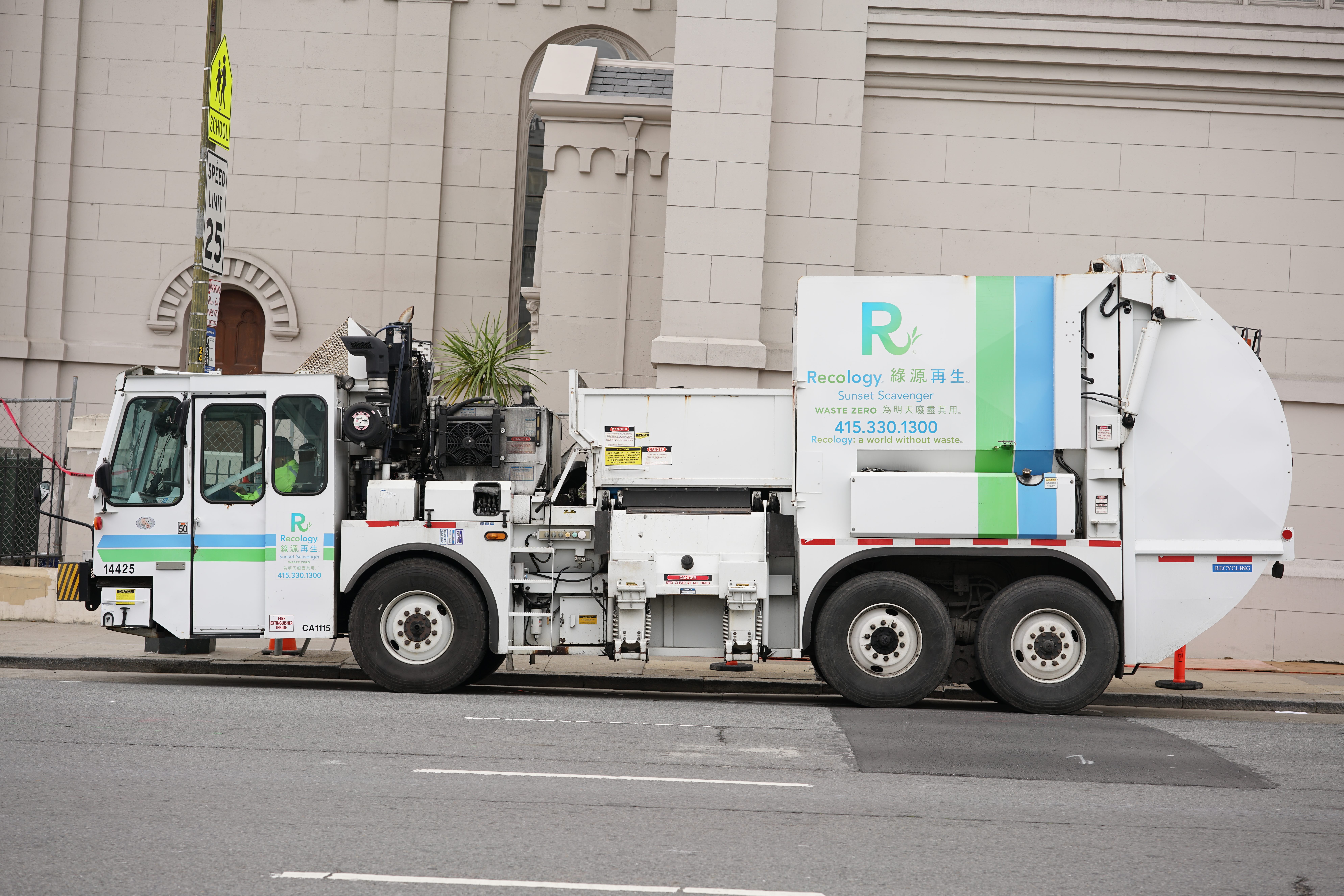
Contrast these cutting-edge firms with ExxonMobil, which saw its share price rise 80 percent in 2022, even as its product fuels the climate crisis. If we continue embracing this version of corporate success, we’ll be unable to turn back the floods, wildfires and heatwaves unleashed by climate change. Yet far more firms remain committed to, and locked into, the shareholder-primacy paradigm than to the emerging new paradigm of next-generation enterprise design.
If we continue embracing this version of corporate success, we’ll be unable to turn back the floods, wildfires and heatwaves unleashed by climate change
Each paradigm is defined by five elements of deep enterprise design: the true purpose of a business, and how that purpose is manifest in its governance structure, ownership model, networks of related businesses, and the role of finance. It is in redesigning these core elements that true transformation takes place.
Barriers to change
In hundreds of workshops with business managers, we have learned that it isn’t a lack of aspiration, commitment, or technical capability that stands in the way of change. The main barriers lay in the relationship with capital, manifested in financial parameters and the ways priorities are set and governed.
These barriers trace to the mindset of the underlying paradigm, what one coauthor of this piece, Marjorie Kelly, calls “capital bias”. This bias, similar to racial or gender bias, favors the wealthy – the holders of capital – over workers, society, and the environment. Capital bias is infused throughout today’s prevailing enterprise design, from the structure of boards and relationships with investors to financial expectations that bind decisionmakers. These effectively form a brick wall that confines sustainability ambitions to glossy reports and laudable statements.
Bias toward capital is so deeply ingrained and so embedded in business thinking that few question its legitimacy. Next-generation enterprises, however, are starting to shift the playing field. They’re no longer oriented around the last-century question: “How much value can we extract for shareholders?” Rather, they are motivated by this century’s far bigger question: “How many benefits for society and the living world can we generate?”
Next-generation enterprises... are motivated by this century’s far bigger question: how many benefits for society and the living world can we generate?
Another co-author of this piece, Kate Raworth, named this new kind of economy the Doughnut Economy, whose goal is to meet the needs of all people within the means of the living planet, between social and planetary boundaries. To bring about such a future, the dynamics of the economy, and the businesses within it, must be transformed: from degenerative to regenerative – by working with and within the cycles of the living world – and from divisive to distributive – by sharing value and opportunity created far more equitably with all who co-create it. Such transformative changes in business operations call for the redesign of business itself.
Businesses unlocking ambition through deep redesign
Redesign can begin at many levels within an organisation. Owners of family businesses can sell part or all of the company to their employees: some, such as Berrett-Koehler Publishers, have created multi-stakeholder ownership. Becoming a purpose trust allows for strongest protection of mission. Reorganising as a benefit corporation can be done by any business, and a recommendation to do so could be put forward by workers, managers, or executives. When a division is being sold, managers could organise an employee stock ownership plan buyout. Any business can put environmental stakeholders on its board. Middle managers might suggest a carve-out – a new division, subsidiary, or special side project – where products and approaches putting sustainability first can be tested. They can develop arguments for why low- or break-even profit margins might be the new yardstick of success in these cases – and why such radical new experiments are vital if businesses are to evolve and thrive in the coming upheavals.
Another co-author, Erinch Sahan, has run workshops with more than 700 business leaders to explore these and other aspects of enterprise redesign. Such workshops start by inviting each business to identify a set of transformative possibilities for its products, services, or business model, and then ask how redesigning the company’s Purpose, Networks, Governance, Ownership and Finance could enable it to ambitiously pursue these possibilities in practice. Some questions that business leaders are exploring through this tool are shown below.
The way ahead
Business stands at a crossroads. The polycrisis of the current era presents businesses with the task of deeply re-evaluating what they are in service of, and how their current deep design ultimately inhibits or enables that. The future would not look back kindly on a business community that continued to prioritise capital bias and accumulation for an elite few in the context of fast-growing social crises and ecological breakdown. A broad set of enterprise designs are already showing they are better able to navigate these challenges: from employee-owned and steward-owned businesses, to cooperatives and social enterprises, with new verifications such as People & Planet First that cut across these models. The leadership to redesign businesses to unlock creative change need not come only from the top. It can begin with any of us.
Marjorie Kelly is distinguished senior fellow at The Democracy Collaborative and author of Wealth Supremacy and Owning Our Future (which first outlined the five elements of deep enterprise design). Kate Raworth is author of Doughnut Economics and co-founder of Doughnut Economics Action Lab (DEAL). Erinch Sahan is the former CEO of the World Fair Trade Organization and now leads DEAL's engagement with businesses.
Photo credits:
Main photo (top): Redesigning enterprise. Courtesy of Doughnut Economics Action Lab.
Middle photo: A Lōdal Evo T-28 waste collection truck operated by Recology in San Francisco, California, USA. This vehicle is a side-loading compacting waste collection truck. Waste is loaded into the hopper located in the middle of the vehicle, which is then compressed into the body by a hydraulic ram. Photo by Dllu, licensed under the Creative Commons Attribution-Share Alike 4.0 International licence.

